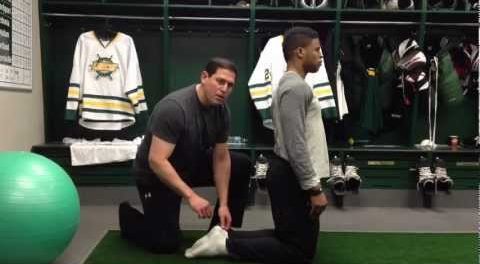Achilles tendonitis is a common injury in runners and other endurance athletes and can be a significant source of frustration.
Anatomy
The achilles tendon is the terminal extension of the three posterior muscles in the lower leg: the soleus, gastrocnemius, and plantaris. The achilles tendon attaches (inserts) into the posterior calcaneus. Inflammation of the tendon can occur either at the insertion of the tendon at the attachment to the bone or several inches above the bony attachment.
Symptoms
- Pain, swelling, tenderness or stiffness at the Achilles tendon.
- Pain in the heel during or after exercise especially with running and jumping.
- The pain is worse with heel strike or when pushing off from the ground.
A rupture of the achilles tendon can occur during a forceful push-off. Typically there is a “pop” or ripping sensation in the back of the calf, followed by pain and decreased movement of the ankle. A suspected achilles tendon rupture requires evaluation by a sports medicine physician and may require surgery or prolonged immobilization in a cast or walking boot.
Causes
Overuse or overloading of the achilles tendon, from either too much volume or too high of an intensity of activity is a common cause of achilles tendonitis.
Other common causes of Achilles tendinitis include:
- Tight calf muscles
- Recent increase in running mileage or running up hills.
- Over-pronation (rolling in of the foot)
- High foot arches (pes cavus) and flat feet (pes planus)
Treatment
Eccentric exercises of the calf had been demonstrated by Alfredson (1998) and others to improve the symptoms of Achilles tendonitis. Alfredson’s latest protocol for eccentric exercises has demonstrated a high rate of improvement of achilles tendonitis with the following protocol:
These exercises are done by standing on a step or stairs with the toes on the step and the heels hanging off the step.
- Begin the exercise standing on a stair facing up the stairs
- Slowly lower your heel so that it drops below the step.
- You should feel a slight stretch in the calf.
- This movement is the eccentric or lengthening movement.
- Slowly return to the starting position. Repeat 10 to 15 times twice a day.
- The forefoot (toes) should be on the stairs and the heels off the stairs
- The eccentric motion is the dropping of the heel to lengthen the calf muscles
- Three sets of 10 to 15 repetitions – twice a day
- Continue the eccentric achilles tendon exercises for up to 12 weeks
- Continue the achilles tendon exercises until pain-free
- Add weight when there is less pain with the eccentric exercises
